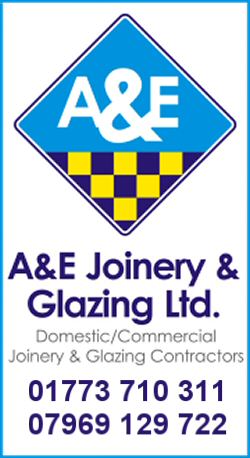The Village Of Pentrich
Categories: Local Information
Pentrich is a small village between Belper and Alfreton in Derbyshire.
Pentrich Revolution
The village gave its name to the Pentrich Revolution, which occurred on the night of 9/10 June 1817. A gathering of some two or three hundred men (stockingers, quarrymen and iron workers), led by Jeremiah Brandreth ('The Nottingham Captain'), (an unemployed stockinger, and claimed by Gyles Brandreth as an ancestor), set out to march to Nottingham. They were lightly armed with pikes, scythes and a few guns, and had a set of rather unfocussed revolutionary demands, including the wiping out of the National Debt.
Historical background
Following the end of the Napoleonic Wars in 1815 a number of factors combined to drive the country into a severe depression. The increased industrialisation of the country, combined with the demobilisation of the forces, led to mass unemployment. The Corn Laws led to massive increases in the price of bread, while the repeal of Income Tax meant that the war debt had to be recovered by taxing commodities forcing their prices even higher. In addition, 1816 was unusually wet and cold, producing a very poor harvest.
The loss of production of war materials had affected engineering companies like the Butterley Company, the price of iron ore had slumped, and the production of coal had fallen by a third. The hosiery trade had also been falling away for about five years.
There was, in addition, a wider political picture. Since the previous century, there had been calls for parliamentary reform, particularly an end to the rotten boroughs. Subsequently there had been the French Revolution and the Reign of Terror and it appeared that any reform would be accompanied by violence, which Pitt's government set out to pre-empt by increasingly punitive measures.
Prelude
Since 1811, there had been minor local uprisings, with stocking frames being smashed in protest at the employment of unskilled workers to produce low quality stockings. Further afield, there had been food riots in many of the big cities.
Around the country there were a number of secret revolutionary committees. The one at Nottingham was headed by a needle maker, William Stevens, and its representative from Pentrich was a framework knitter called Thomas Bacon. Several meetings were held at Pentrich during which Bacon asserted that preparations for an uprising were well advanced, and he had made enquiries at the ironworks and elsewhere about procuring weaponry.
The person appointed by Stevens to be his deputy was Jeremiah Brandreth, an unemployed stocking knitter with a wife and two children. Opinion of him at the time seems to have been somewhat mixed, but he promised the men that they would go to Nottingham, invading Butterley ironworks on the way, where they would kill the three senior managers and ransack it for weapons. At Nottingham they would receive bread, beef and ale, and a sum of money, and they would take over the barracks. They would then proceed by boat down the River Trent and attack Newark. He told them that there were sixteen thousand ready to join them.
Among those present were Isaac Ludlam, a bankrupted farmer who owned a small quarry where he had built up a small cache of pikes, and William Turner an ex-soldier. The plan was to assemble at ten o'clock on the 8th June, where Ludlam's pikes would be distributed and further weapons would be acquired by requisitioning a man and a gun from each house that they passed.
The March
Around fifty men assembled in South Wingfield and for four hours ranged around the neighbourhood for weapons and extra men. At one house a widow, Mary Hepworth, lived with her two sons. When she refused to open up, the rioters broke a window and Brandreth fired a shot through it, killing a servant. Some of the party were appalled at this wanton act, but Brandreth threatened to shoot them also if they did not remain.
Eventually the group set out for the Butterley Company works. When they arrived they were confronted by George Goodwin the factory agent, who, with a few constables, faced them down. One or two of the party defected and, increasingly demoralised, the remainder headed for Ripley.
There was no police force at that time. Order was maintained by the various semi-private armies such as the yeomanry, while intelligence was gathered by the Home Secretary, Lord Sidmouth, from a network formed of local magistrates and paid informers. One such, William Oliver, was among the group. Indeed there were accusations that Oliver was something more—an agent provocateur under the Home Office's instruction. Be that as it may, Sidmouth was well aware of what was afoot.
Through Ripley they pressed more followers into service and at Codnor and Langley Mill they awoke various publicans for beer, bread and cheese. It was now raining heavily and yet more men defected.
At Giltbrook they were met by a small force of soldiers: twenty men of the 15th Regiment of Light Dragoons. The revolutionaries scattered and, while about forty were captured, the leaders managed to escape, to be arrested over the following months.
Retribution
Altogether, eighty-five of the marchers were placed in Nottingham and Derby gaols, to be brought to trial at the County Hall in Derby, charged in the main of "maliciously and traitorously [endeavouring]...by force of arms, to subvert and destroy the Government and the Constitution." Twenty-three were sentenced, three to transportation for fourteen years and eleven for life. Brandreth, Ludlam and Turner were convicted of high treason and sentenced to death. Although the customary quartering was remitted by the Prince Regent, the three were publicly hanged and beheaded at Nuns Green in front of Friar Gate Gaol in Derby.
There is little to be seen nowadays of the event, but the hexagonal office, where Goodwin stood his ground, still exists in the yard of the Butterley Company's works.
E. P. Thompson in The Making of the English Working Class sees this rising as a transitional event between the earlier Luddite actions and the later populist Radicalism of 1818–20 and 1830–32. (Note that Thompson refers to the village throughout as 'Pentridge', not the modern spelling.)
St Matthew's Church
Whilst St Matthew's Church is not mentioned in the Domesday book (1086), a charter of 1154–9 confirms the gift of the church of Pentrich to the cannons of Darley Abbey. Of this Norman church or one which shortly after replaced it the five arcades separating the aisles from the nave, parts of the west wall and south aisle and lower part of the tower remain.
The tower was made higher in the late 14th century and the two aisles were rebuilt. Around 1430 a new pointed chancel arch was built, retaining the earlier capitals and piers and a clerestory was added. The tracery of the east window suggests a date of 1420–50.
The font stands on a pedestal dated 1662 but the bowl has decoration typical of the Norman period. During the 19th century the bowl was absent and was used for the salting of beef.
On the exterior of the south chancel wall is a scratch dial or mass clock, a sort of sundial used to show service times.
Today the church meets for worship every Sunday at 9.30 am.
Genealogical notes
Regarding Gyles Brandreth's ancestral claim: recent genealogical research of the Brandreth line has proven that it is highly unlikely that Gyles Brandreth is a direct descendant of Jeremiah Brandreth, as the only two remaining Brandreth descendants (son Timothy and grandson John) both emigrated to the USA in January 1847 on the ship Mongahela and all of their known descendants remained in the USA. Jeremiah Brandreth's ancestral line was researched by Helen Wilson of the Pentrich Historical Society.[citation needed]
In literature
Percy Bysshe Shelley wrote a famous piece (1817) contrasting the wretched fate of the 'Pentrich Martyrs' (Brandreth, Turner & Ludlam) to the public mourning for the death of Princess Charlotte Augusta of Wales in childbirth a few days earlier.
Charles Lamb wrote (1820) "The Three Graves" (which turns out to be not for the condemned men, but their accusers)
... I ask'd the fiend, for whom these rites were meant? "These graves," quoth he, "when life's brief oil is spent, When the dark night comes, and they're sinking bedwards, I mean for Castles, Oliver, and Edwards." A fictional account is given of the postwar slump, chartism, the Pentrich Revolution and industrial progress in The Reckoning, Volume 15 of The Morland Dynasty, a series of historical novels by author Cynthia Harrod-Eagles.
Original information taken from Wikipedia
http://en.wikipedia.org/wiki/Pentrich
Distributed under a Creative Commons licence
http://creativecommons.org/licenses/by-sa/3.0
| Upload Files | Update Listing | Search Similar | Advertise |
|---|






















